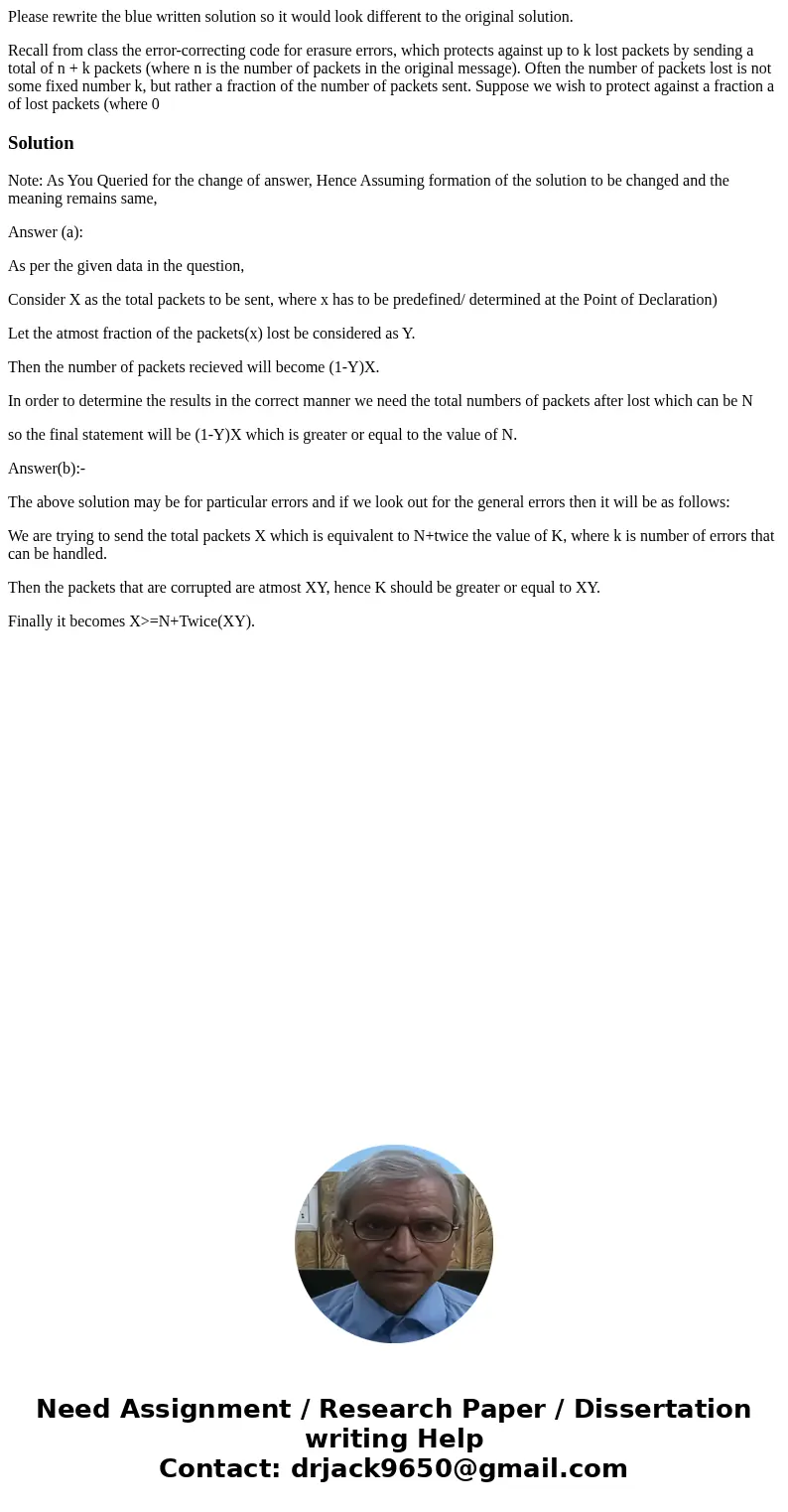Please rewrite the blue written solution so it would look di
Please rewrite the blue written solution so it would look different to the original solution.
Recall from class the error-correcting code for erasure errors, which protects against up to k lost packets by sending a total of n + k packets (where n is the number of packets in the original message). Often the number of packets lost is not some fixed number k, but rather a fraction of the number of packets sent. Suppose we wish to protect against a fraction a of lost packets (where 0Solution
Note: As You Queried for the change of answer, Hence Assuming formation of the solution to be changed and the meaning remains same,
Answer (a):
As per the given data in the question,
Consider X as the total packets to be sent, where x has to be predefined/ determined at the Point of Declaration)
Let the atmost fraction of the packets(x) lost be considered as Y.
Then the number of packets recieved will become (1-Y)X.
In order to determine the results in the correct manner we need the total numbers of packets after lost which can be N
so the final statement will be (1-Y)X which is greater or equal to the value of N.
Answer(b):-
The above solution may be for particular errors and if we look out for the general errors then it will be as follows:
We are trying to send the total packets X which is equivalent to N+twice the value of K, where k is number of errors that can be handled.
Then the packets that are corrupted are atmost XY, hence K should be greater or equal to XY.
Finally it becomes X>=N+Twice(XY).

 Homework Sourse
Homework Sourse